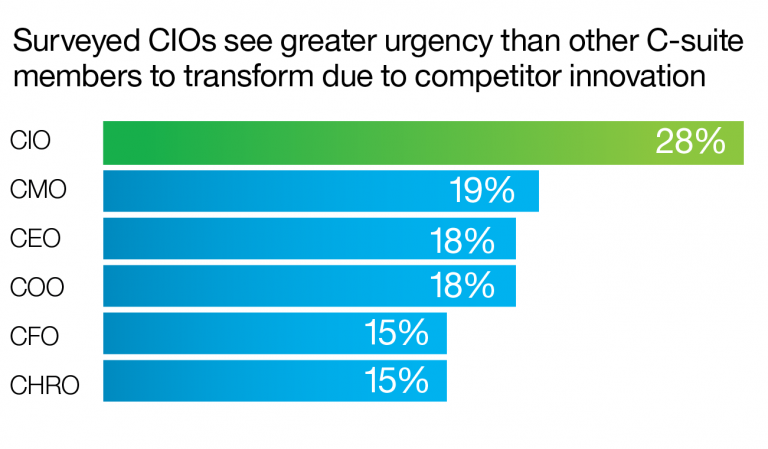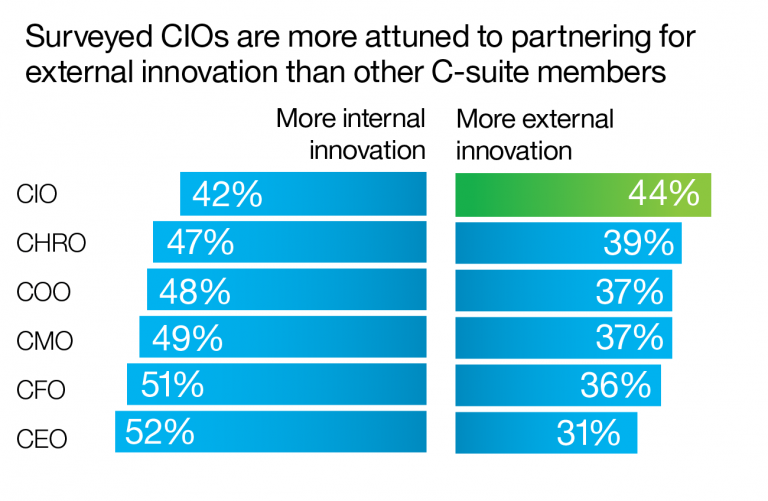“Who needs a CIO?” The IBM Global CIO Study raised that question back in 2011. At that time, the usefulness of a centralized CIO role was under question, with technology being infused into every aspect of the organization as peer executives applied specific technologies to support their disciplines.
However, the 2011 study revealed that CIOs could thrive by aligning with one of four “CIO mandates” – distinct roles for the IT function that reflect the particular needs and expectations of their organization:
- Leverage: Provide the IT fundamentals and streamline operations to increase organizational effectiveness.
- Expand: Create new organizational capabilities by using IT to optimize business processes and increase enterprise-wide collaboration.
- Transform: Deploy industry-specific IT solutions that strengthen the organization’s position in the value chain.
- Pioneer: Help radically re-engineer products, markets and business models that promote the business and organizational vision.
Fast-forward six years and the CIO’s position in the C-suite remains strong, with the role converging on two of the more strategic mandates: Transform and Pioneer. CIOs are working particularly hard to align their IT strategy with their organization’s business strategy. According to the latest insights from the IBM Global C-suite Study, almost half of their fellow C-suite colleagues agree that CIOs have already achieved this lofty goal. In doing so, CIOs are becoming aware of competitors using innovative technologies to deliver a more compelling value proposition, which could threaten their organizations’ business models. That’s largely why CIOs are reporting a much greater urgency for their organizations to transform compared to their peers.

The critical role that CIOs can play involves strengthening their organizations’ competitive advantage through innovation. Many CIOs are looking to drive transformation by laying the technological foundations necessary for their organizations to move to a platform-based business model. They also say they are eager to induce advanced analytical and cognitive capabilities to help elevate the customer experience while simultaneously improving the organization’s forecasting and decision-making abilities.
In their efforts to exceed business expectations and become more proactive in driving transformation, CIOs are stepping away from a “not-invented-here” syndrome – in contrast to the rest of the C-suite. CIOs plan to seek new ways of innovating their businesses with the help of other parties at the same time they look inside to innovate.

CIOs are showing they’re as ready as ever to fulfill their role in the C-suite, taking responsibility to define, as well as implement, the organization’s strategy. They’re also safeguarding ways for the organization to innovate and respond in an age of increasing uncertainty. CIOs of today not only provide seamless IT experiences, but challenge the way value is distributed within their industries by leveraging innovative technology to better understand and serve customers. Most importantly, they’re helping their organizations discover new ways of working and new areas for doing business.
Find out more about the evolution of the CIO role when we release our full Chief Information Officer report in early 2018.
This blog is part of a monthly series that highlights emerging trends from our 19th Global C-suite Study. The study features interviews with more than 10,000 CxOs.
Meet the authors


